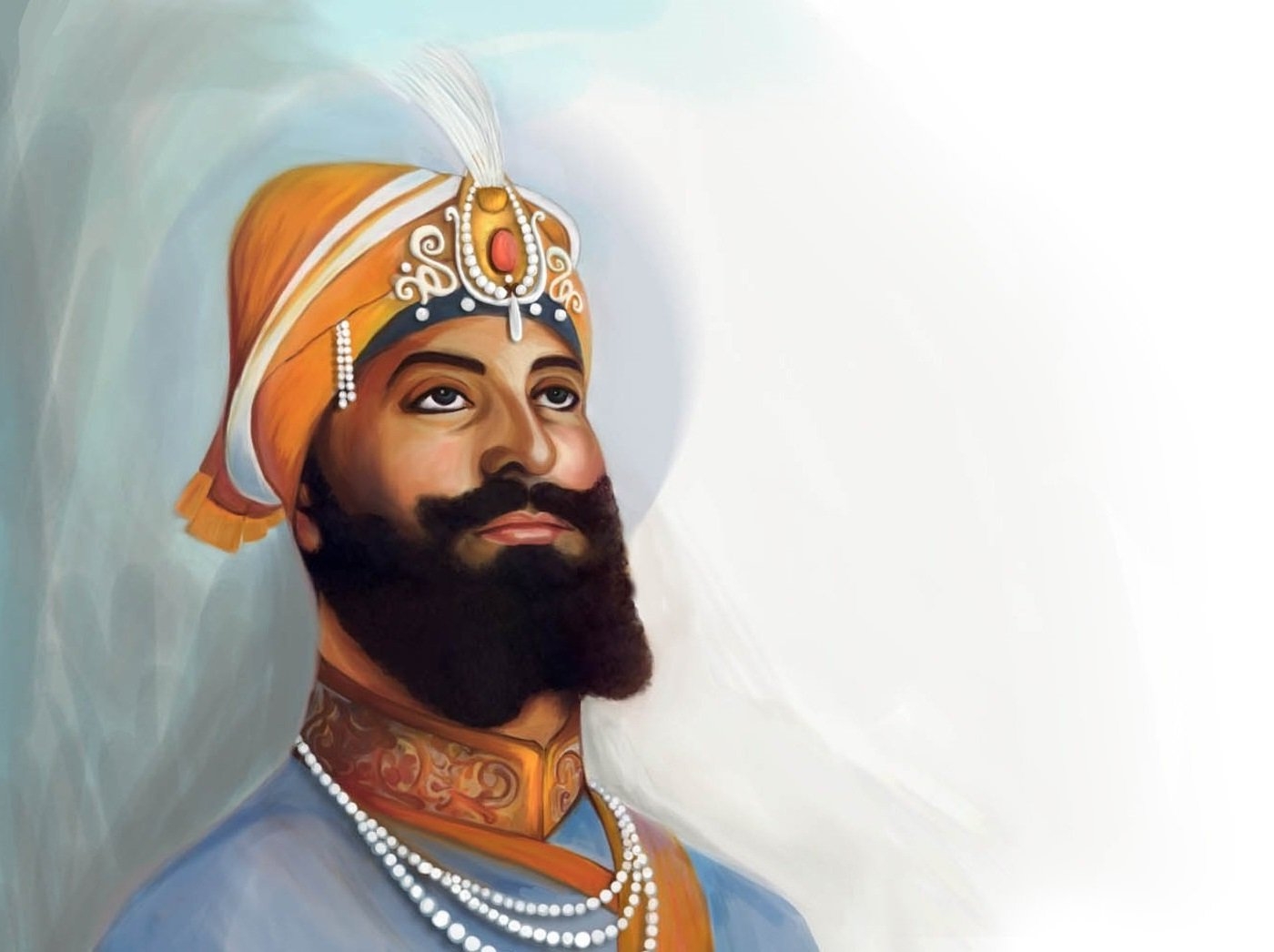Guru Gobind Singh Ji (1666 – 1708)

Guru Gobind Singh Ji was the 10th and the last human Guru of the Sikhs. He was the son of Guru Teg Bahadur Ji, the 9th Guru, and became Guru in 1675 at the age of 9. He held the Guruship for 33 years until he passed away in 1708.
He was a scholar of Persian, Sanskrit, Brig Bhasha, and Arabic, as well as a military genius. He fought tyranny and stood for religious freedom. Guru Gobind Singh Ji fought twelve battles, during which his four sons, the Char Sahib Zaday, were martyred:
- Baba Ajit Singh (18 years old)
- Baba Jujhar Singh (14 years old)
- Baba Zorawar Singh (8 years old)
- Baba Fateh Singh (6 years old)
Khalsa
On April 13, 1699 (Vaisakhi), Guru Gobind Singh Ji founded the Khalsa Order. He called for five volunteers to offer their lives — each from a different caste:
- Dharam Das – Jat (farmer)
- Daya Ram – Khatri (soldier)
- Mokham Chand – Dhobi (washerman)
- Himmat Rai – Jhir (water carrier)
- Sahib Chand – Nai (barber)
He initiated them with Khanday Di Pahul (double-edged sword ceremony), reciting the five sacred prayers while stirring water with a Khanda:
- Jap Ji Sahib
- Jaap Sahib
- Tavprasad Sawaiyas
- Chopai Sahib
- Anand Sahib
Mata Jeeto Ji added sugar to the amrit, symbolizing humility and sweetness with courage. These five became the Panj Pyarey (five beloved ones). Guru Gobind Singh Ji then received amrit from them, renaming himself from Gobind Rai to Gobind Singh. The Panj Pyarey became:
- Bhai Daya Singh
- Bhai Dharam Singh
- Bhai Himmat Singh
- Bhai Mohkam Singh
- Bhai Sahib Singh
He gave Sikhs the greeting: Waheguru Ji Ka Khalsa, Waheguru Ji Ki Fateh, meaning “The Khalsa belongs to God; all victory is the victory of God.” Males received the name Singh (lion) and females Kaur (princess).
Five Ks
Guru Gobind Singh Ji instructed all Khalsa to observe the Five Ks:
Kesh
Uncut hair and beard – acceptance of God's will.

Kangha
Wooden comb – keeps hair tidy and clean.

Karhha
Iron/steel bracelet – symbolizes restraint and commitment.
Kirpan
Small sword – stands for courage and protection of the weak.

Kaccha
Shorts – symbolizes modesty and moral strength.
*Images from sikhnet.com
Guru Granth Sahib Ji
In 1706, Guru Gobind Singh Ji compiled the final version of the Guru Granth Sahib Ji at Damdama Sahib, with Bhai Mani Singh as the scribe.
In 1708, he passed the Guruship to the Guru Granth Sahib Ji, which is now the eternal Guru and the spiritual guide of all Sikhs.
For more information, visit our Useful Links page or join a Sikhism Class.
